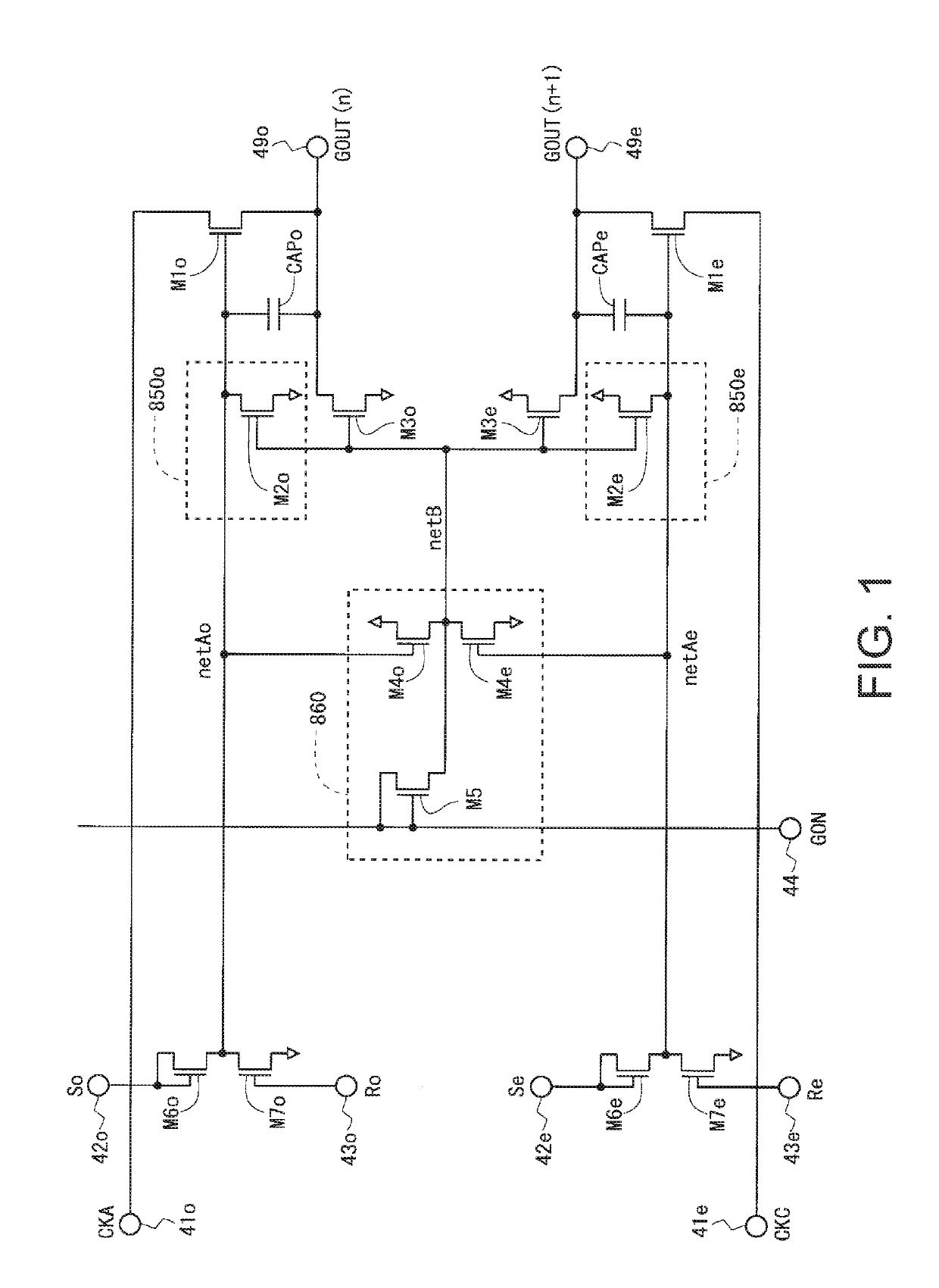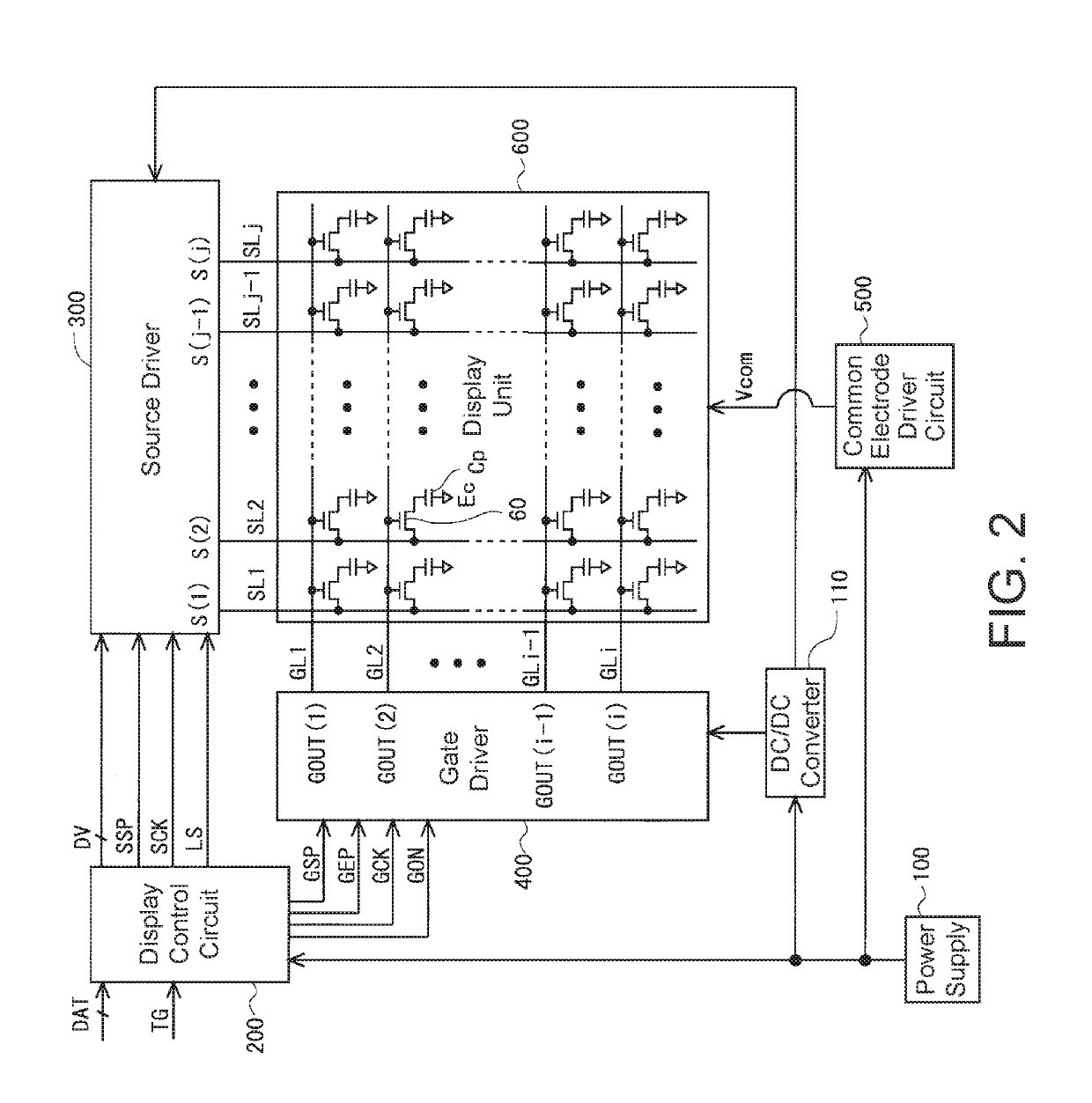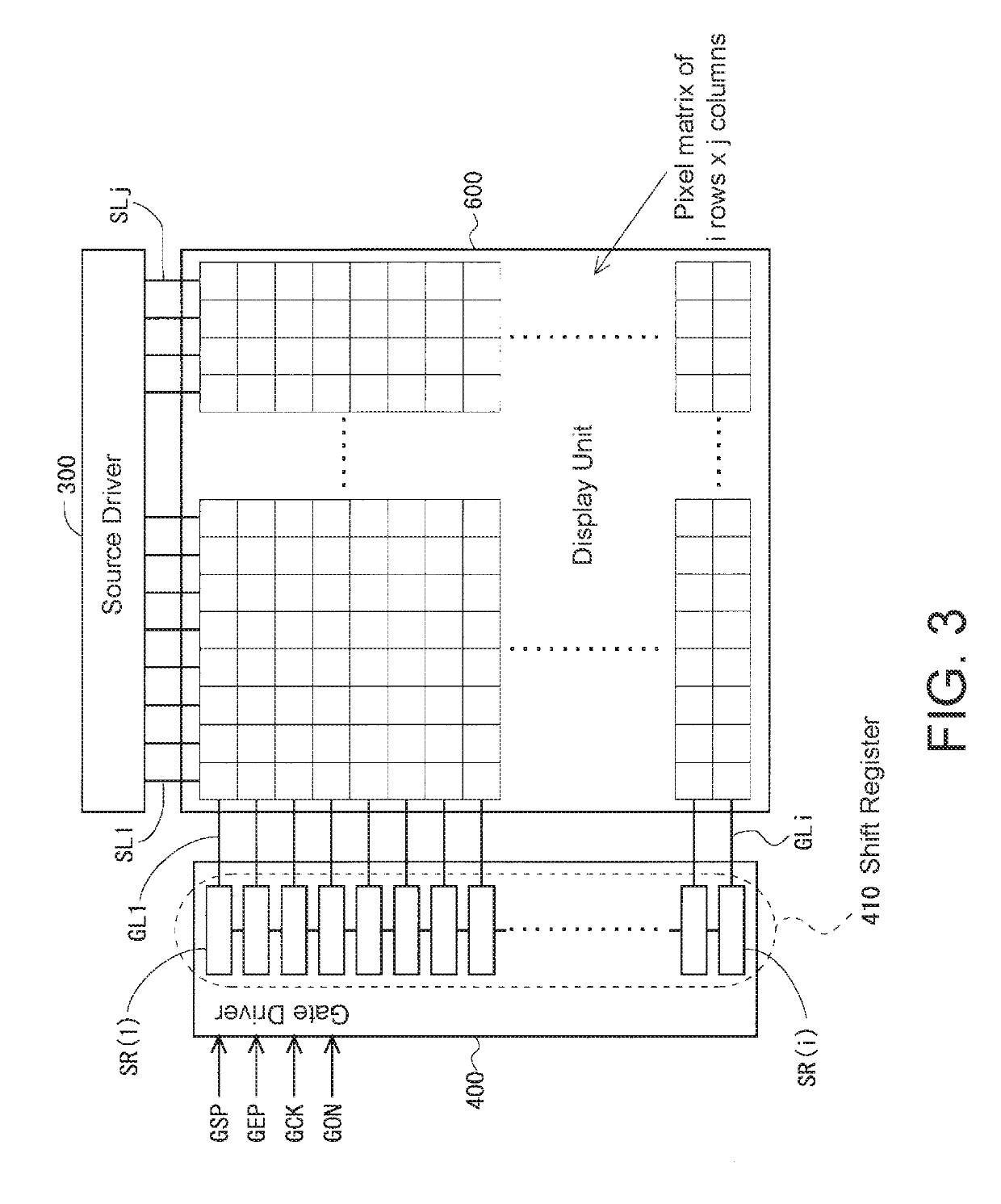Shift register, display device provided with same, and method for driving shift register
a shift register and display device technology, applied in the field of active matrix display devices, can solve the problems of abnormal operation, fluctuation of the voltage of scanning signal gout, and inability to simultaneously transmit image signals representing pixel voltages, so as to reduce the scale of the overall shift register circuit, and reduce the thickness of the bezel in the display device
- Summary
- Abstract
- Description
- Claims
- Application Information
AI Technical Summary
Benefits of technology
Problems solved by technology
Method used
Image
Examples
embodiment 1
[0147]
[0148]
[0149]FIG. 2 is a block diagram illustrating an overall configuration of an active-matrix liquid crystal display device according to Embodiment 1 of the present invention. As illustrated in FIG. 2, this liquid crystal display device includes a power supply 100, a DC / DC converter 110, a display control circuit 200, a source driver (an image signal line driver circuit) 300, a gate driver (a scanning signal line driver circuit) 400, a common electrode driver circuit 500, and a display unit 600. In the present embodiment, the gate driver 400 and the display unit are formed on the same substrate (here, on a TFT substrate that is one of the two substrates included in a liquid crystal panel). In other words, the gate driver 400 of the present embodiment is a monolithic gate driver.
[0150]The display unit 600 includes a plurality of (j) source bus lines (image signal lines) SL1 to SLj, a plurality of (i) gate bus lines (scanning signal lines) GL1 to GLi, and a plurality of (i×j) ...
embodiment 2
[0224]
[0225]Next, Embodiment 2 of the present invention will be described. In the present embodiment, a gate driver 400 is a monolithic gate driver that has a vertical inversion feature (a feature for switching the order in which the gate bus lines are scanned). To implement this vertical inversion feature, in the present embodiment, a first scanning order instruction signal UD1 and a second scanning order instruction signal UD2 are input to the gate driver 400 from a display control circuit 200 in addition to a gate start pulse signal GSP, a gate end pulse signal GEP, gate clock signals GCK, and a stabilization control signal GON. Note that in the present specification, scanning the gate bus lines in the “first row, second row, . . . , (i−1)th row, ith row” order will be referred to as “forward scanning,” while scanning the gate bus lines in the “ith row, (i−1)th row, . . . , second row, first row” order will be referred to as “reverse scanning.”
[0226]
[0227]FIG. 23 is a block diagr...
embodiment 3
[0278]
[0279]Next, Embodiment 3 of the present invention will be described. Similar to in Embodiment 2 as described above, in the present embodiment a gate driver 400 is a monolithic gate drivers that has a vertical inversion feature. Unlike Embodiment 2, however, the present embodiment utilizes a configuration in which the first scanning order instruction signal UD1 and the second scanning order instruction signal UD2 are not used.
[0280]
[0281]FIG. 31 is a block diagram illustrating a configuration of a shift register 410 in the gate driver 400 in Embodiment 3 of the present invention. Similar to in Embodiment 1, in the present embodiment, two adjacent stage circuits SR are treated as one stage circuit group SRG. The stage circuit SR of each odd-numbered stage includes an input terminal for receiving one of the gate clock signals GCK, an input terminal for receiving a low-level DC supply voltage VSS, an input terminal for receiving a set signal S1o, an input terminal for receiving a ...
PUM
| Property | Measurement | Unit |
|---|---|---|
| OFF-level supply voltage | aaaaa | aaaaa |
| voltage | aaaaa | aaaaa |
| pixel voltages | aaaaa | aaaaa |
Abstract
Description
Claims
Application Information
 Login to View More
Login to View More - R&D
- Intellectual Property
- Life Sciences
- Materials
- Tech Scout
- Unparalleled Data Quality
- Higher Quality Content
- 60% Fewer Hallucinations
Browse by: Latest US Patents, China's latest patents, Technical Efficacy Thesaurus, Application Domain, Technology Topic, Popular Technical Reports.
© 2025 PatSnap. All rights reserved.Legal|Privacy policy|Modern Slavery Act Transparency Statement|Sitemap|About US| Contact US: help@patsnap.com



